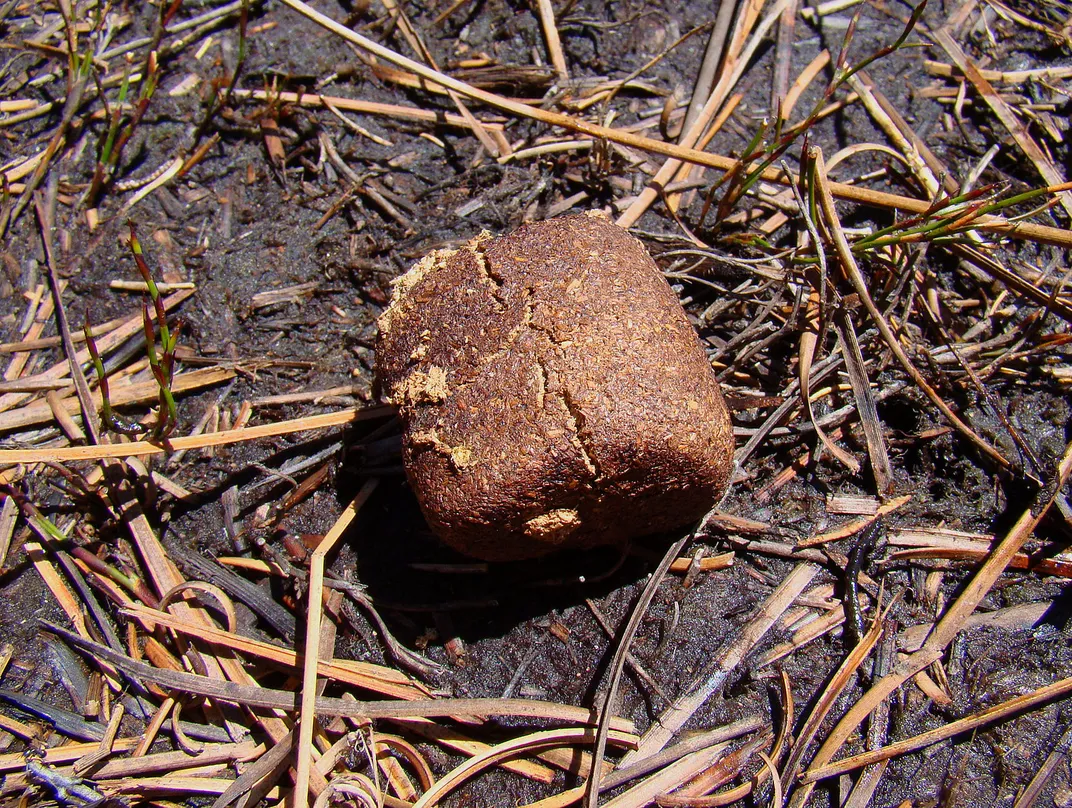Wombats Poop Cubes, and Scientists Finally Got to the Bottom of It
The marsupial’s unique digestive tract forms square dung
:focal(1604x1431:1605x1432)/https://tf-cmsv2-smithsonianmag-media.s3.amazonaws.com/filer/64/7c/647c2b9a-409b-4dc6-8940-2cf8976eafc5/8609868266_028d6959c6_o.jpg)
Burrowed beneath Australian forests, grasslands, and mountainous regions, the bare-nosed wombat (Vombatus ursinus) feeds primarily on grasses—and poops cubes. But how the bare-nosed wombat excretes poop in the shape of cubes has mystified scientists until now.
A study published last month in Soft Matter reveals how the wombat’s intestines constrict to shape the scat.
Bare-nosed wombats can excrete four to eight scat pieces at a time and may poop up to 100 cubes a day. After the wombat defecates, the furry critter collects the two centimeter-sized cubes and places them around their territory, possibly to communicate with other wombats or attract mates, reports George Dvorsky for Gizmodo.
In 2018, study co-author Patricia Yang, a mechanical engineer at Georgia Institute of Technology, and her team previously found that the cube-shaped poop formed at the end of the wombat’s digestive process and that the wombat’s intestinal wall contained elastic-like properties, reports Gizmodo.
To build on those results and fully understand how the wombat’s soft intestinal walls created sharp cube-like edges in the poop, Yang and her team dissected two wombats and examined the texture and structure of the intestinal tissue, reports Tess Joosse for Science. A 2-D mathematical model created from the wombat’s intestinal tract showed how the organ expanded and contracted during digestion—and eventually squeezed out the excrement, reports Science.
“A cross-section of the wombat’s intestine is like a rubber band with two ends kept slightly taut and the center section drooping. The rigid and elastic parts contract at different speeds, which creates the cube shape and corners,” Patricia Yang tells Elena Debre for Slate.

At 33 feet long, the wombat’s intestines are ten times the size of the wombat itself, reports Amy Woodyatt for CNN. Digestion takes four times as long as a human and produces drier feces because all nutrients and water are extracted from its food. After removing all nutritional content from food, the contractions shape the poop into a cube.
“The contractions are very subtle, and these corners get more and more accentuated over 40,000 contractions that the feces experiences as it travels down the intestine,” David Hu, a professor of fluid mechanics at the Georgia Institute of Technology and co-author of the study, tells Gizmodo.
Scientists suspect that the wombat evolved this unique trait to mark its territory on rocks and logs with poop that won’t easily roll away, reports Jeremy Blum for HuffPost.
Hu says that their findings could also help raise wombats in captivity because their feces’ shape is a tell-tale sign of health. “Sometimes [captive wombats’] feces aren’t as cubic as the wild ones,” Hu tells Science.
Researchers anticipate discovering how the wombat’s distinctive defecation process works can help humans detect colon cancer. It could also help engineers develop new ways to manufacture and shape products.
/https://tf-cmsv2-smithsonianmag-media.s3.amazonaws.com/accounts/headshot/gamillo007710829-005_0.png)
/https://tf-cmsv2-smithsonianmag-media.s3.amazonaws.com/accounts/headshot/gamillo007710829-005_0.png)